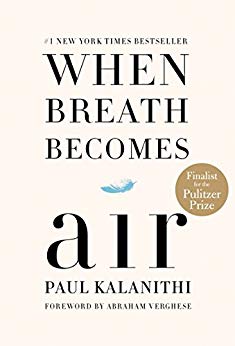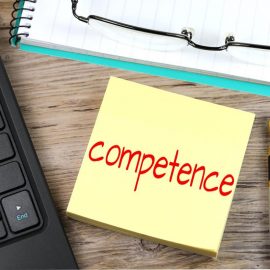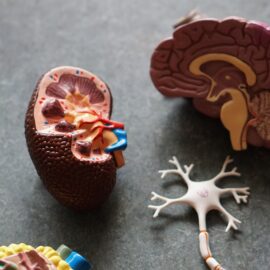

This article is an excerpt from the Shortform summary of "When Breath Becomes Air" by Dr. Paul Kalanithi. Shortform has the world's best summaries of books you should be reading.
Like this article? Sign up for a free trial here .
What are some of the qualities of a good doctor? How can doctors achieve good relationships with patients, get results, and learn how to be a good doctor?
Through his experiences in medical school and his love of literature, Dr. Paul Kalanithi spent his life searching for meaning and connectedness. He formed philosophies about how the qualities of a good doctor, and worked on applying and developing further even when he was diagnosed with lung cancer so he could have the characteristics of a great doctor.
Shortform note: This article and our full When Breath Becomes Air summary is written in a way that allows you to share in the experience provided by the memoir.
Simply reading about the content of the story seems insufficient in expressing the emotional journey. To really provide you with the sensation this book creates, we wrote in the first person, using a voice similar to his. We highly recommend reading the original book for the full experience. Reading the words coming directly from him is a powerful experience we can’t replace.
Lessons Learned in Medical School about How to Be a Good Doctor
Shortform note: Paul Kalanithi grew up with doctors in his family. Though he didn’t want to become a doctor early in life, he saw firsthand the qualities of a good doctor, and the importance of knowing how to be a good doctor. Early on in his medical school journey, Paul was determined to gain the qualities of a good doctor, and develop the characteristics of a great doctor, like the many he’d known in his life and education.
In those first two years of med school, I saw how simple it was to view the work as merely that—work. But with the help of my girlfriend, Lucy, I came to see that every aspect of science correlated with an aspect of life. A wavy line on an EKG wasn’t just a heartbeat, it was life coursing through a body.
My comprehension of life, death, and meaning was sharpening. I recognized that the human relationality I’d pondered so often during my previous studies was exemplified in the relationship between doctor and patient.
With the help of Shep Nuland, an esteemed surgeon-philosopher who studied mortality and lectured at Yale, I came to realize that death was not a mystery, but a fact of life. During all of the time researching literature and the history of medicine to get at the truth of death, I had never come to understand it completely. But Nuland taught me that death can only be understood as an existential certainty and by coming toe-to-toe with it. This is one of the qualities of a good doctor.
Death was a personal loss of life, but it was also the rudimentary natural ending of a living organism. Being a doctor, then, was serving as the gatekeeper, shepherding a life to either live another day or succumb to this universal fate. The responsibility of that role felt immense and heroic.
The fourth year of medical school brought decisions about specialties. Many of my classmates were selecting less-intense specialties, those with better hours, more money, and less stress. In those specialities, the responsibility for life was low.
I opted to choose neurosurgery, one of the most demanding specialties there is. My decision was motivated by an experience I had witnessing a pediatric neurosurgeon discussing a child’s tumor with his parents. I listened as he transitioned from physician, detailing the medical implications, to companion, respecting the personal, moral implications and guiding them through their fears. These are the qualities of a good doctor.
This field would not only force me to confront the questions I’d been asking since undergrad, but also place me squarely in the space where the answers could be found.
My third year of medical school, I began my hands-on education in obstetrics and gynecology. In this field, new life is the ultimate goal. I was working in the labor and delivery ward, where I witnessed this new life for the first time. I didn’t know at the time that I was also witnessing the first patient who would die.
The pressure on me was light. I was meant to observe and assist the residents and nurses when asked. But inside, the pressure was great. That I might be thrust into the void between life and death, be called upon to deliver a child on my own, was terrifying—more so because failure in this new reality equated to death.
My resident, Melissa, was monitoring the preterm labor of a young woman with twins. Viability starts at 24 weeks, and the twins were a day or two away from that marker. Keeping them inside for as long as possible so they could finish developing was the goal.
At some point in the night, the twins became distressed, requiring an emergency C-section for survival. I stood in the OR and watched as the surgeon cut into the uterus, exposing the face of one of the babies. Out came one baby, then the other, both purple, both no bigger than a handful. They were rushed to the NICU. Their organs were present but unable to manage the task of living.
I left the hospital that morning, feeling as inept as those organs in my role as a doctor. The physical manifestation of medicine was a far cry from the theoretical understanding learned in school. Yet, the next night I was back in the ward, being guided by my attendee as a viable baby was born. I held the baby and felt the tangibility of life in my hands.
After the procedure, I found out that the twins had died, one earlier in the day and one while I was delivering this other baby. The words of Samuel Beckett came to me: “One day we were born, one day we shall die, the same day, the same second….Birth astride of a grave, the light gleams an instant, then it’s night once more.”
I questioned whether the C-section was the correct call. Melissa told me it was up to the doctor’s discretion to decide whether distress in the womb was more advantageous than being born without a viable working system. The most significant decisions I’d ever made were about which sandwich to eat for lunch. I wondered if I would ever achieve that level of discretion. And I wondered how I could live with the responsibility and ensuing results.
It occurred to me that a keen knowledge of medicine wasn’t sufficient. I would have to gain wisdom, or a moral intelligence, to walk that fine line between life and death. I was learning that this was one of the most important qualities of a good doctor.
Residency
Shortform note: While Paul worked hard to attain the characteristics of a great doctor in medical school, he was also learning that one of the qualities of a good doctor is the ability to connect with patients as human beings, not just as patients. Paul’s difficult residency was one of the most formative experiences on how to be a good doctor, and attaining the qualities of a good doctor.
At first, residency seemed to be about paperwork. There were never-ending papers that needed to be pushed here or there, and I didn’t leave the hospital for two days. But I quickly learned to get through the paperwork more efficiently, until the never-ending stack only took an hour.
It was on a Tuesday that my first patient died.
Mrs. Harvey was eighty-two years old and seemingly healthy. She underwent minor surgery to remove a blockage in her bowels, and I checked on her Monday night. I went home happy that she was awake and stable.
Later that night, I received a call and was told she was crashing. I blurted out a series of tests to run and hustled back to the hospital. Around sunrise, the ER patient was taken to surgery, and Mrs. Harvey had stabilized.
Again, I left the hospital only to be called back. The doctors in the ICU were performing CPR, and Mrs. Harvey came around again. But an hour later, she died. I teetered between frustration and sorrow. Suddenly, Mrs. Harvey wasn’t just information on paper. She’d become my patient, and I’d lost her. I knew, in that moment, I would never see paperwork as something to rush through. I would see it for what it was: a representation of a person balanced between life and death.
I would experience many more deaths my first year of residency. Sometimes, I could manage all of it, taking it in as I took in everything else around me. Other times, the graveness of death became so heavy, I felt like I was drowning in the misery of it and the misery of all involved.
Some couldn’t hack it. They crumbled from the pressure or didn’t know how to accept the culpability involved and left the program. The weight of the responsibility was immense, and as my skills improved, my responsibility increased. Determining the likelihood of survival was matched by the need to determine the viability of survival. Saving a patient meant saving the patient’s ability to not simply exist, but to live. Doing otherwise felt like a bigger catastrophe than death. This, we all felt, was a key to how to be a good doctor.
I started to wonder if my role as gatekeeper was normalizing the scenario. Or, perhaps, it was keeping me at a safe distance from the battle, like a general atop a horse on a hill. I was around death, near dying patients. I was there to witness their greatest moment of grief and suffering. But I wasn’t fighting next to them—just organizing and observing the fight. My life went on the same. I was forming relationships with others on the outskirts, bonding over our duties to the dying. I had found a way to adapt my baseline of normalcy to the environment around me.
This perspective became clear one night after a motorcycle trauma came into the ER. I was in the middle of “dinner”—an ice cream sandwich and soda. I stashed the items on the side of the trauma room and went to work.
It became clear the motorcycle patient would not survive, even if we could get him to surgery. After we pronounced him dead, I left the room. But a second later, I remembered my discarded dinner. I snuck back in and retrieved the items, saving the ice cream sandwich before it became a melted mess in front of the body that could not be saved. At that moment, I contemplated whether my morality had gotten lost amidst my professional acumen.
Each moment that I had failed to recognize the patients I saw as people, as priorities, as suffering individuals worthy of empathy and focused care, flooded my mind. I had moved through patients’ pain, worries, and diagnoses like a worker on a factory line. I felt crushing guilt. I had failed to recognize the significance of the situation and their lives. I was turning into Tolstoy’s cliche of a doctor: mechanically treating disease without noticing the individual. But understanding this tendency may be one of the characteristics of a great doctor.
The Human Relationality Philosophy
Shortform note: As Paul learned in his residency, one of the qualities of a good doctor was the ability to connect with patients. Out of all the traits of a good doctor, Paul believed on a higher level that this one was essential to his success, and the quality of his patients’ experiences and wellbeing.
Human relationality was once of great importance to me, but I had forgotten it amid the harried world of diagnosis and prognosis. It wasn’t sufficient to just be an excellent surgeon. I had to be an excellent physician, which meant guiding those in my care, including families, to a place where tragedy can be comprehended. This was one of the characteristics of a great doctor.
This role, the pastoral one, became my highest priority, for often the families are equally blinded to delicate facets of life and death. They look at their sick or injured loved one and see the person they were, the life they lived, and the memories they shared. It was a sight of the past, whereas I understood the realities of the future.
I could use this knowledge to help these families understand that, with severe brain trauma, the body in front of them no longer contained that image from the past. The questions were all about the future: whether their loved one could have one and whether they should. Because only the family knows for certain if a dramatically altered quality of life would be worth it, or whether death would be preferred. It was their decision, and I wanted to serve as an usher to help them make it.
In this new role, I no longer spewed risks and statistics like an auctioneer. I became a sort of ambassador or companion. I met the patients and families at the apex of their grief and provided what I could to help them see the best way through it.
I was taking full ownership of every aspect of my patients’ care by this point. I thought about my father and the way he fostered trust and real connection with his patients. I was motivated to do the same. These are the qualities of a good doctor.
Human relationality requires honesty, but honesty doesn’t mean overwhelming patients with a giant bolus of mortality. It is not uncommon for patients and families to tune out and lose their tongues after receiving bad news. At these moments, all there is to do is take their hand and guide them as far as they can go until they’re ready for more.
Yet, making human relationality a priority was difficult, and doing so had consequences. Meeting patients in the foggy space between the past and future was emotionally taxing. I didn’t realize how much so until I was driving home one night in my third year and realized I was crying. But still, I never questioned the work or the value in it. The call to be a neurosurgeon—as it is a calling—is a virtuous endeavor, not simply because of the lives we are able to save, but because of the identities we are tasked to maintain.
We had to remember that death was an inevitability. Even if we were technically excellent. Even if we were morally considerate, sometimes people die, as we all will.
Understanding this unwavering fact doesn’t mean we are weak or not committed to our responsibilities. It simply means we understand what we are up against and continue to forge our way through despite it. We might not always win, but we keep trying regardless.
Shortform note: During his time in medical school and working as a resident, Paul explored and learned about many of the traits of a good doctor. Though he understood that skills and experience were some of the qualities of a good doctor, he also understood that when it comes to truly caring for patients, human relationality and connection cannot be underestimated as traits of a good doctor.

———End of Preview———
Like what you just read? Read the rest of the world's best summary of Dr. Paul Kalanithi's "When Breath Becomes Air" at Shortform .
Here's what you'll find in our full When Breath Becomes Air summary :
- How Paul Kalanithi discovered he had cancer
- How Paul coped with his cancer until his very end
- How Paul's wife dealt with his death and found the strength to continue






